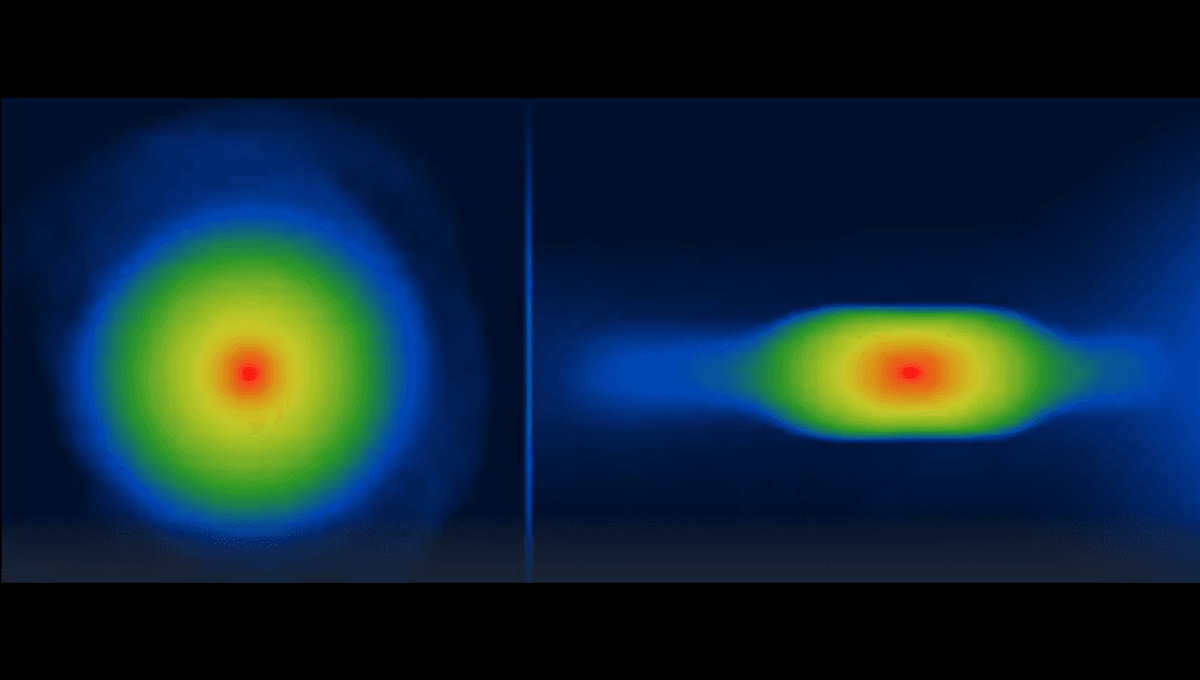
Prior to achieving their final form, gas planets take on flattened shapes technically known as oblate spheroids, a new study has found. Although the Earth today is still classified as an oblate spheroid, thanks to slight flattening at the poles, the protoplanet stage is drastically flatter, according to newly published modelling, looking more like an M&M than a chocolate ball.
It is now generally understood that planets form out of protoplanetary disks of dust and gas that surround newly formed stars. We’ve directly viewed many of these, and sometimes even spotted the giant planets emerging, such as the two planets around the 5-million-year-old star PDS 70.
However, while the material from which they form is acknowledged to be disk-shaped, rather than spherical, it was previously believed that by the time a recognizable protoplanet had formed, it was something close enough to spherical that you would need to look hard to notice the difference. This has now been challenged in a University of Central Lancashire study.
“Many exoplanets… have been discovered in the last three decades,” said Dr Adam Fenton in a statement. “Despite observing many thousands of them, how they form remains unexplained.”
There are competing theories explaining the process, with the most prominent known as “core-accretion” and “disk instability”. Fenton and his co-author Dr Dimitris Stamatellos’ modeling assumed disk instability, which proposes much more rapid planetary formation than the alternative. “This theory is appealing due to the fact that large planets can form very quickly at large distances from their host star, explaining some exoplanet observations,” Fenton said.
The process of modeling the formation of gas giants this way required half a million CPU hours at a high-performance computing facility, but, Fenton said: “The results were amazing and worth the effort.”
Stamatellos said: “We have been studying planet formation for a long time, but never before thought to check the shape of the planets as they form in the simulations. We had always assumed they were spherical.” The modeling also suggests that when material leaves the disk to become part of the planet, it is usually by falling on the poles.
Regrettably, the modeling did not reveal any sign of a giant turtle for the protoplanet to rest upon during this phase, presumably prior to abandonment as things rounded out.
Disk instability is currently less widely favored than core accretion, but the Central Lancaster team hope their work will change that.
Direct imaging of protoplanets is easier than trying to spot well-established worlds, but it is still possible only in a limited number of cases. Still, fewer of these are likely to be visible in enough detail to distinguish the shape. Nevertheless, if the modeling is right, protoplanets will look different depending on the angle from which they are seen, and the world’s most powerful telescopes may be able to confirm it.
If proven right, might this be the basis for a truce between science supporters and flat Earth believers? They acknowledge the Earth today is (almost) round and we stop mocking them on the basis that four point something billion years ago they were sort of right? Ok, probably not, but it was worth a try.
The study has been accepted for publication in Astronomy and Astrophysics Letters, and is available as a preprint on arXiv.
Source Link: Giant Planets Start Out As Flattened Disks Before They Become Spherical